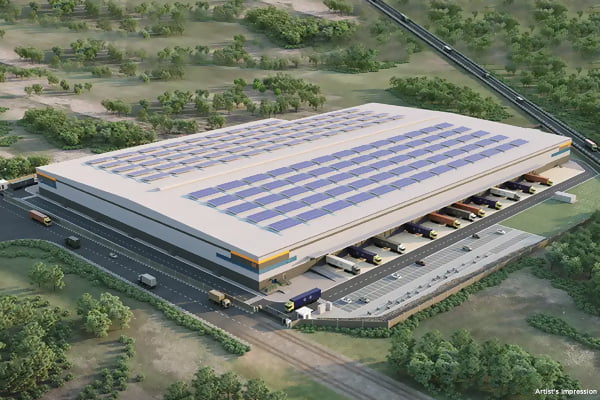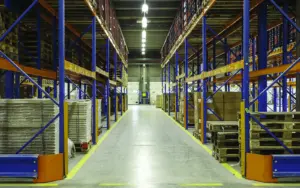Warehousing, an essential component of logistics and supply chain operations, plays a pivotal role in the efficient storage and movement of goods. The growth of the warehousing sector in India has been boosted by positive reforms, infrastructure advancements, GST implementation, and 100% FDI permissions. This expansion can be seen in sectors like e-commerce, retail, pharmaceuticals, FMCG, and manufacturing. According to Research and Markets, the Indian warehousing market is projected to reach $19.5 billion by 2025.
With the pandemic acting as a catalyst for the surge in e-commerce, the demand for warehousing space in Tier 2 and Tier 3 cities escalated. This demand was met primarily by a mix of Grade A, B, and C warehouses, with B and C grade warehouses being the predominant providers. The distinction between these warehouse grades is typically based on construction quality, amenities, automation, location, and clientele.
As the economy rebounds, the warehousing sector emerges as a solution for maintaining operational continuity and business stability. Companies actively seek cost-effective logistics solutions offering enhanced facilities and automation to ensure a seamless supply chain. There’s a noticeable shift in development trends, tenant preferences, funding mechanisms, technology adoption, and rental dynamics across this sector.
Table of Contents
ToggleGrowing Demand for Grade A Warehouses
Organised developers in India are increasingly investing in the infrastructure of Grade A warehousing storage solutions that are comparable to international standards. In recent years, there has been a notable surge in the demand for Grade A warehouses, driven primarily by the influx of international companies seeking top-tier logistics and distribution facilities. These companies, often giants in e-commerce, manufacturing, and global supply chain management, have recognized the pivotal role that Grade A warehouses play in streamlining their operations and meeting the demands of a fast-paced market. These warehouses offer advantages such as increased height, higher floor load capacity, advanced flooring systems, mechanised material handling equipment, robust fire safety protocols, and a clean environment. They also provide amenities like visitor parking, ample docking stations, heavy vehicle manoeuvrability, and multi-modal connectivity.
Given, Grade A industrial warehouses deliver tangible benefits, including 50% higher floor-load capacity, 40% improved operational efficiency, efficient material handling areas, and enhanced safety and security measures. International companies, cognizant of their environmental responsibilities and the growing expectations of consumers and regulators, actively seek eco-friendly warehouse solutions which make Grade A warehouses their preference. This shift towards preferring sustainability is evident in the adoption of green building practices, energy-efficient technologies, and renewable energy sources adopted by the warehousing industry. From solar panels to LED lighting systems, and rainwater harvesting to energy-efficient HVAC systems, these Grade A warehouses are being designed and retrofitted with a focus on reducing the carbon footprint. These attributes make these warehouses exceptionally reliable in terms of contributions towards a better future, security, safety and operational processes. Companies can tailor their operational needs to warehouse availability while maintaining the flexibility required to build a resilient supply chain.
International and Domestic Warehousing Models
Warehouses in India operate at about 50% capacity and offer models such as Built-to-Suit warehouses and multi-client warehousing systems. The BTS model has demonstrated that warehouses operating at over 10% of their operation cost-to-sale ratio tend to achieve higher customer satisfaction. In contrast, other warehouses operate with lower operation cost-to-sale ratios.
Companies seeking to leverage existing infrastructure and expand their businesses often opt for multi-client warehouses. This choice allows cost control and lets them adapt to changing distribution demands based on supply and demand fluctuations. By maximising space and implementing systematic inventory management, automation tools, and analytics, operational efficiency is improved, leading to better service for end consumers. Value-added services like packing, storage, and distribution further enhance this approach. Companies of varying sizes can access state-of-the-art warehousing facilities in a plug-and-play format through these models.
In Grade A industrial warehousing, technologies like Automatic Identification and Data Collection (AIDC), Automated Storage and Retrieval (ASRS), and QR codes are integrated to expedite delivery. Furthermore, warehouses equipped with Artificial Intelligence (AI), Internet of Things (IoT), Radio-frequency Identification (RFID), and modern Warehouse Management Systems (WMS) are available to customers, minimising human error and expediting processing.
Embracing technology and automation as the standard, these warehouses offer optimised operating costs and compliant safety and security systems, making them an attractive solution. Built with scalability and future readiness in mind, these warehouses are prepared for advancements such as drones, highly efficient robotic technologies, and end-to-end supply chain visibility.
Shifting Consumer Landscape
Numerous brands have emerged in the digital space without a retail presence in Tier 2 and Tier 3 markets. These brands also require warehousing space to meet consumer demands. As companies establish new hubs, white-collar workers will likely relocate to smaller cities. This shift will directly impact consumption centres and distribution patterns.
The Indian logistics and warehousing sector is anticipated to grow by 35% this year, surpassing the earlier prediction of 25%. The rise of new warehouse clusters can be attributed to multiple freight corridors, new road networks, favourable policies, e-commerce requirements, and the need for in-city distribution. Additionally, organised warehouse developers are identifying strategic locations and emerging smaller markets that hold the potential to become warehouse hubs.
The warehousing sector is undergoing a transformative phase driven by urbanisation, omnichannel strategies, and shorter supply chains. As logistics and warehousing industries adapt to evolving consumer needs, new demands and models will likely surface.
















